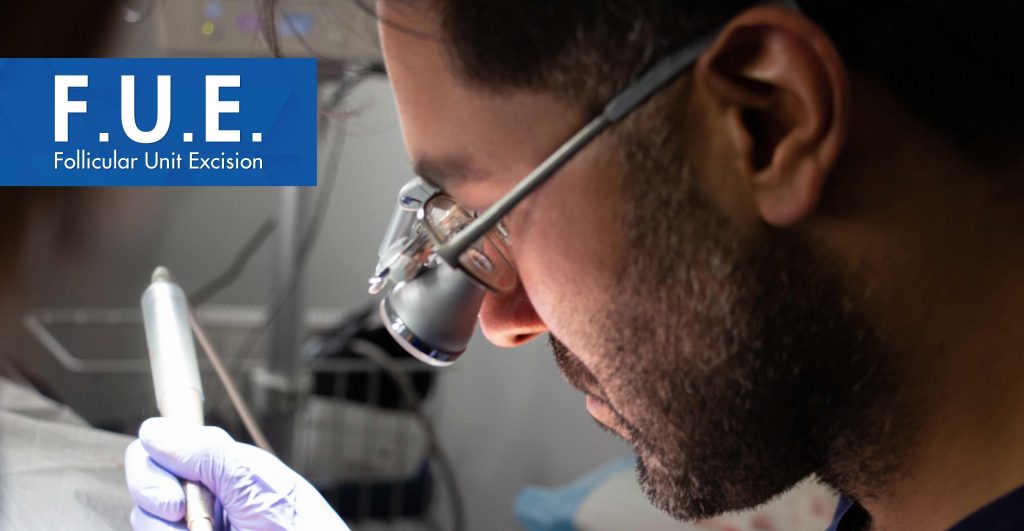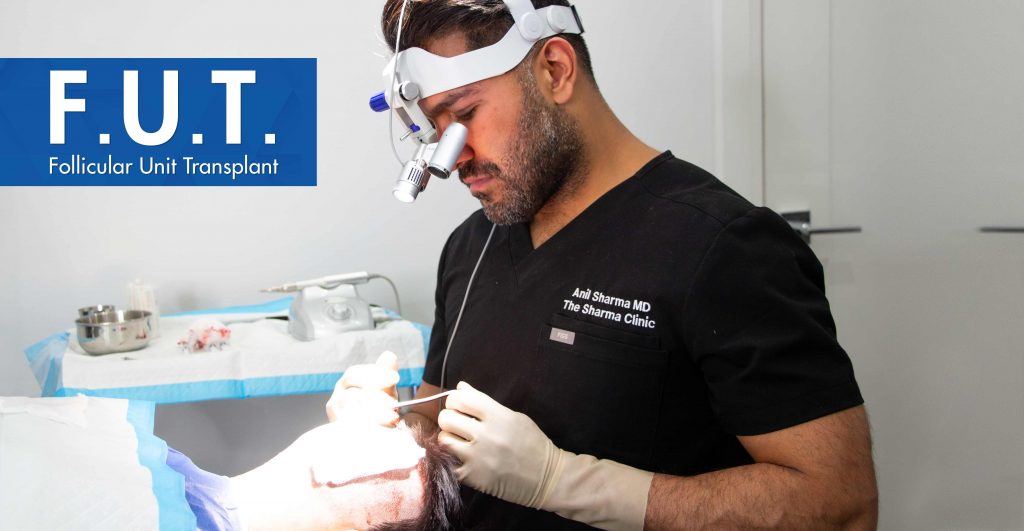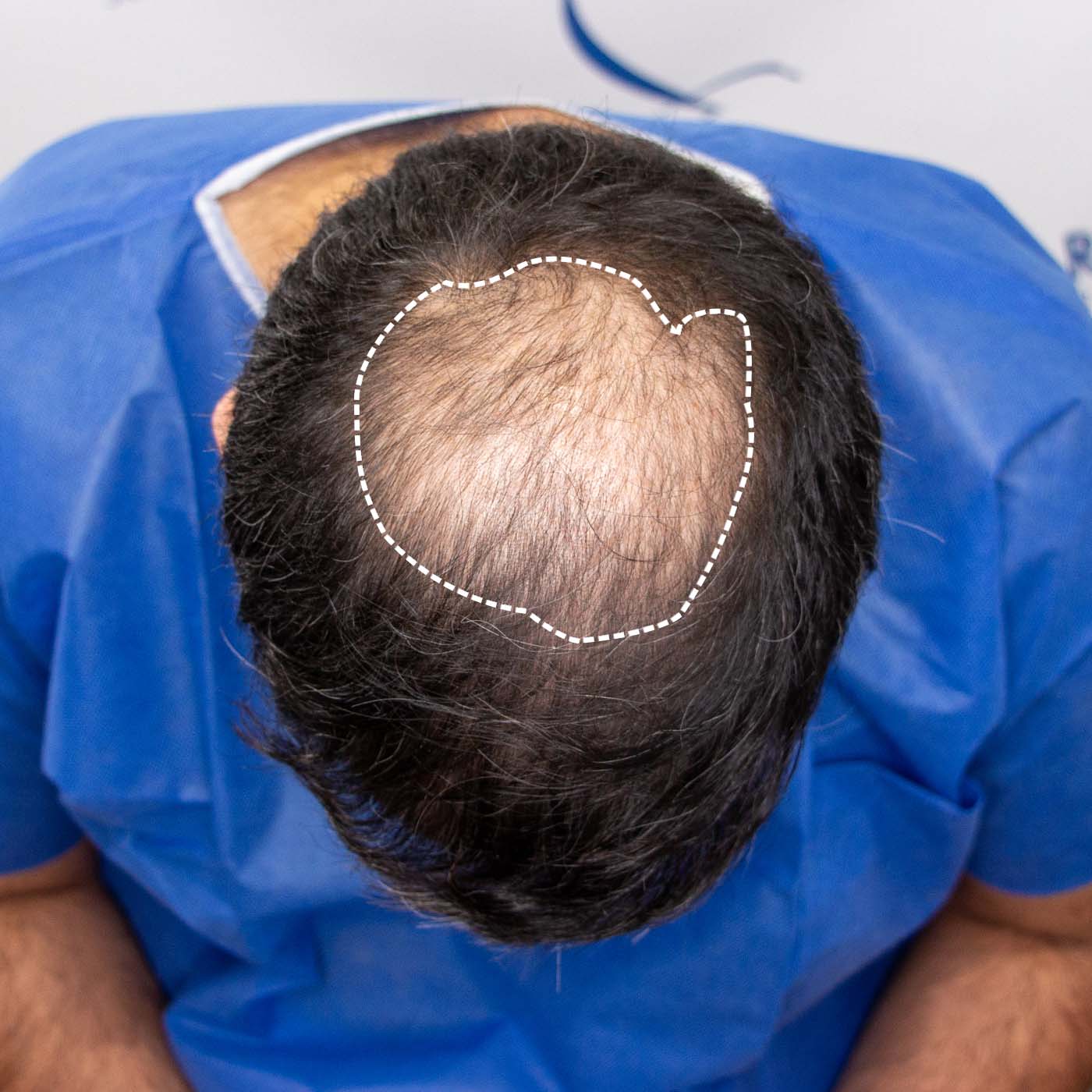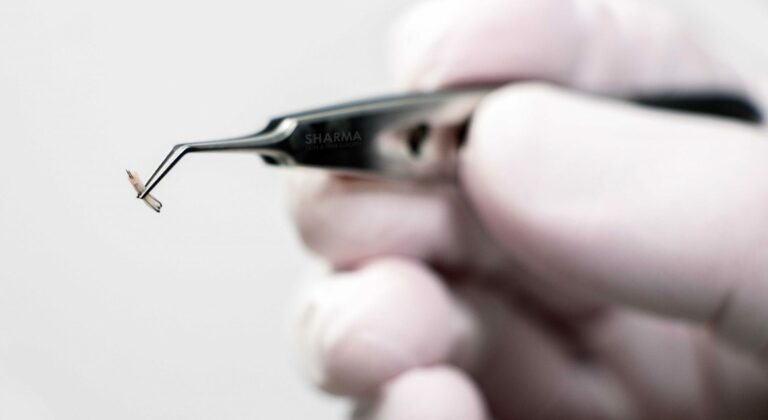Which transplant technique is right for me?

F.U.E. Transplant For Crown Area
The F.U.E. hair transplant process is different in that the head must be shaved so the hair follicles can be harvested individually. Since a smaller area is harvested, a minimally-invasive surgical tool can be used to avoid the appearance of scars. This tool is a small punch that keeps the hair follicle in the scalp tissue, leaving a small dot behind. The benefit is that no scalpel is needed for the procedure. The F.U.E. method is quickly becoming the most popular choice for men requiring hair transplant surgery. The low downtime, light scaring and success rate are hard to beat.

F.U.T. Transplant For Crown Area
Commonly known as “strip” transplant surgery. This method of hair transplant surgery involves taking a strip of scalp from the donor area. A scalpel is used to cut this narrow piece of skin and hair follicles. Then, the wound is carefully closed with stitches using a three-layer closure to minimize scarring. If a small scar is present after the treatment, it is usually unnoticeable for most patients because it can be hidden with a small amount of hair growth. The harvested hair strip is placed under a microscope and divided into graft units that can be placed to recreate the hairline.
More about transplant techniques
Who is a Good Candidate for the FUE?
There is a large range of candidates for the hair transplant procedure. Most commonly we will see people who are starting to notice significant hair loss, or those who are fed up with wearing hats constantly to hide a balding area. A patient whose concern is about his or her appearance and wants to improve on it is a good candidate for a hair transplant surgery, but still there are many factors that need to be considered:
DONOR HAIR DENSITY – It is one of the biggest factors that will determine if a patient is a good candidate for a hair transplant. If a patient has a low donor density, the feasibility of doing a hair transplant is decreased. One of the purposes of having a hair transplant is to look good this means we must be careful not to over-harvest the donor site. Doing so may cause these areas to appear thin.
HAIR TEXTURE – Patients with curly hair tend to be a challenge for FUE because the hair roots are at a much higher risk of being cut or transected from the harvesting process. It takes a lot of skill and years of expertise to master the FUE technique for patients with curly hair.
HAIR COLOUR – This is because of the contrast between the hair color and scalp color. The wider the contrast between the two, the more it presents the balding of the scalp. For patients who have similar hair and skin color (dark skin & dark hair or light skin & light hair) the balding is less noticeable than those who have high contrast.
HAIR THICKNESS – much like the hair colour – thickness can also determine the success of a hair transplant. Patients with thick hair would require less grafts to be placed than patients with thinner hair in certain recipient areas.
SCALP LAXITY – If a patient has a low laxity then it would be more challenging for the grafts to be extracted out of the donor area and be planted. This can be a difficult factor to asses at home, making the consultation an imperative step before committing to surgery.
If all the factors are considered – then a patient is likely a good hair transplant candidate.
To confirm that any one patient is a good candidate we require a consultation with Dr. Sharma prior to committing to surgery.
Book a consultation nowMedically reviewed by
Updated on
Have a question?
Find out how we can help you look feel your absolute best
Contact us 780-476-7970


